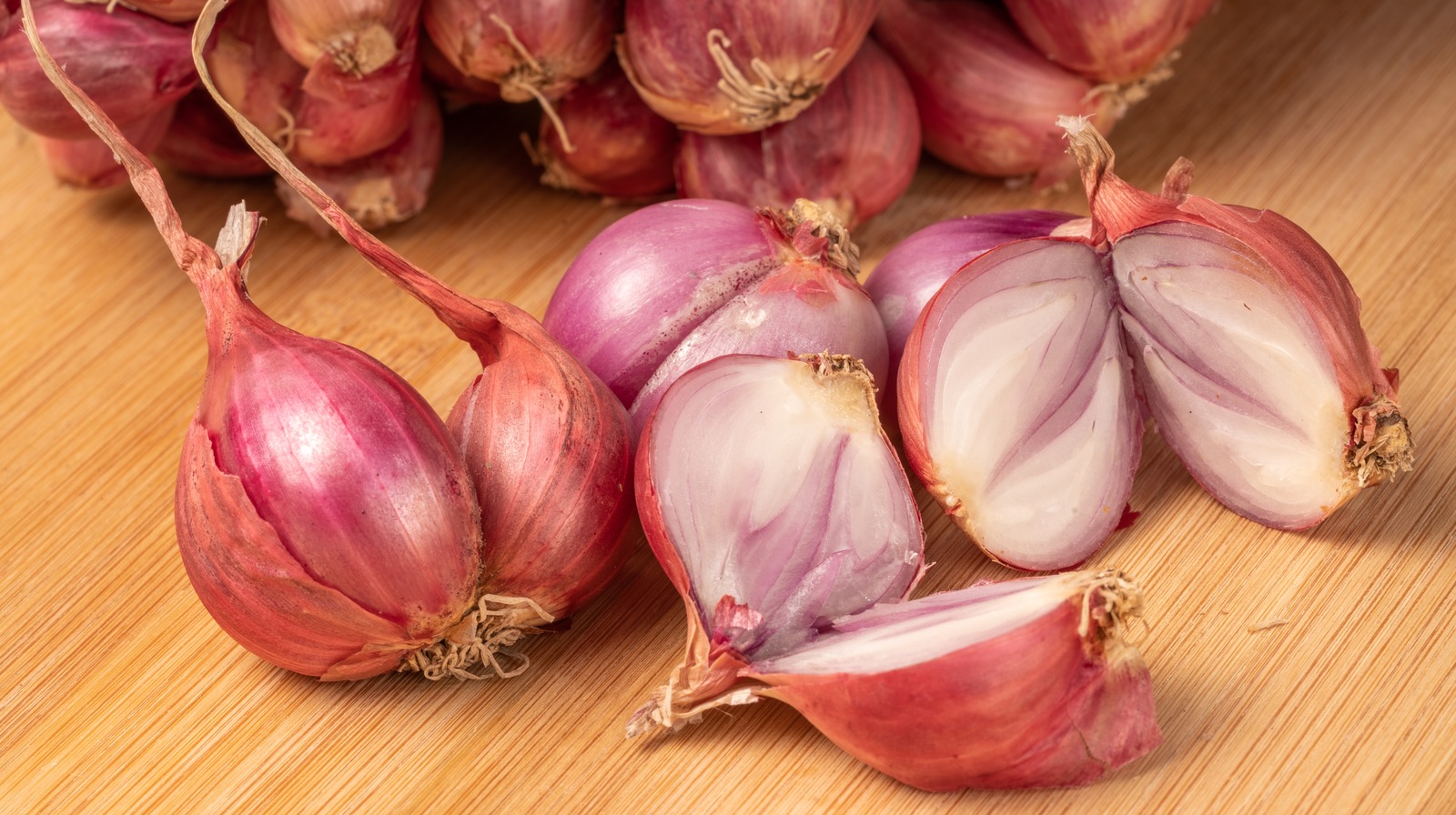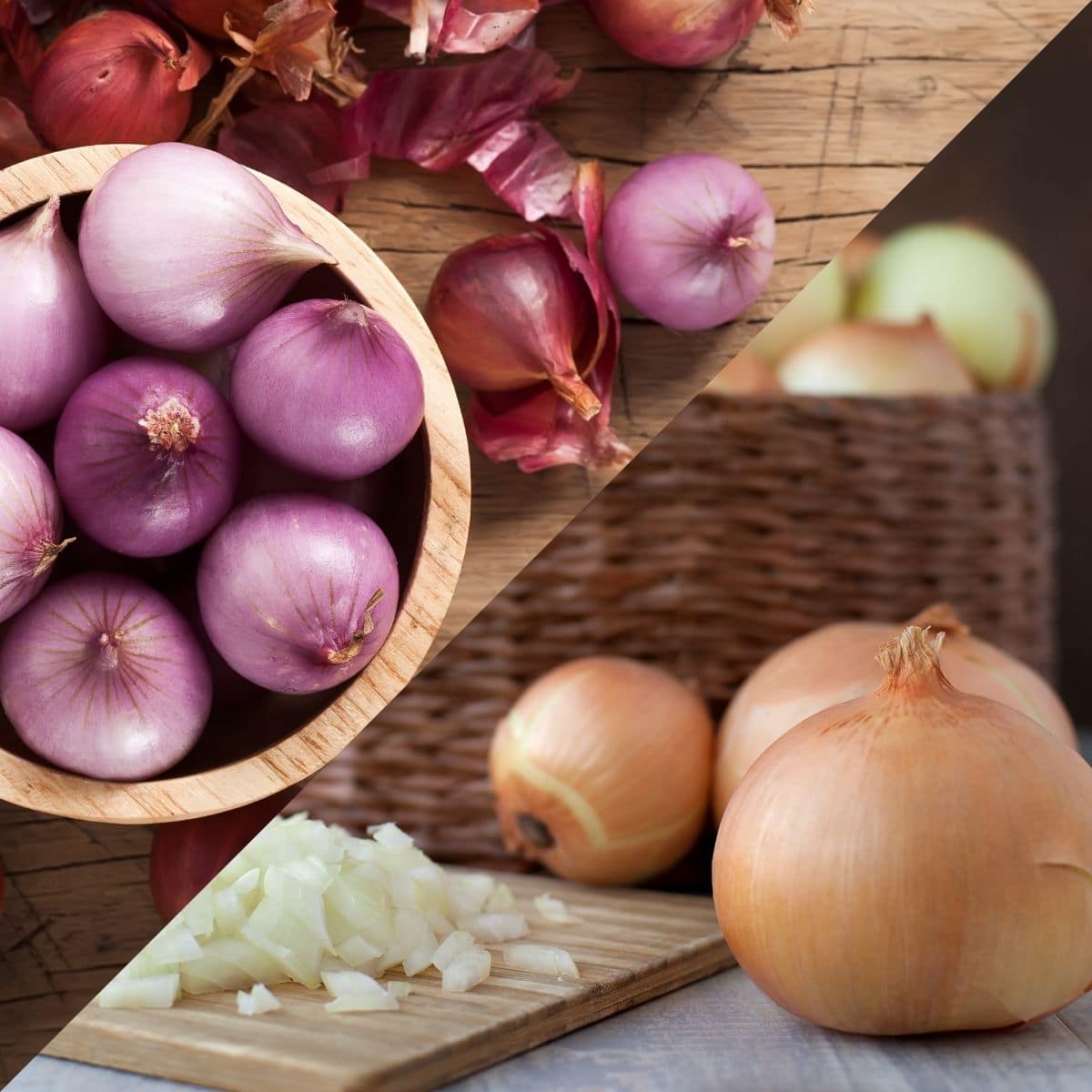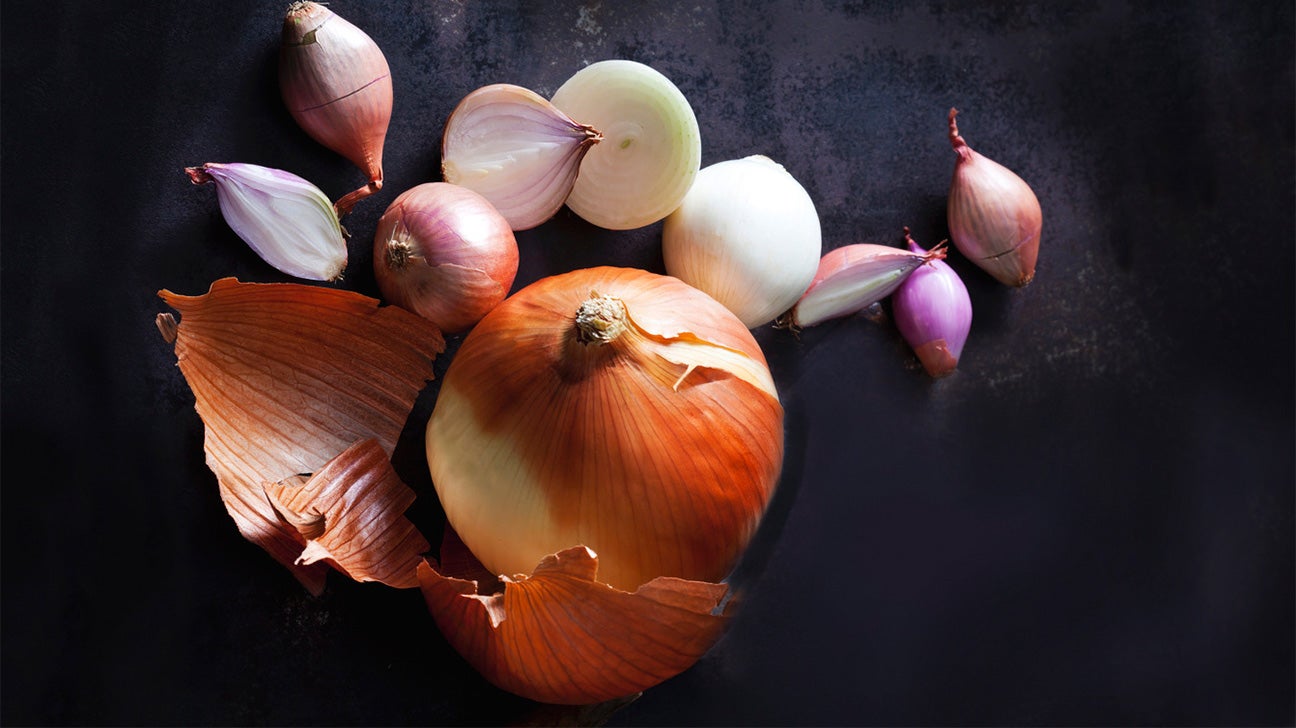Overview Of Garlic And Shallots

Garlic and shallots are both members of the Allium family and share similarities in their appearance and cultivation. Garlic is known for its distinct pungent flavor and strong aroma, while shallots have a more mild and sweet taste. Both ingredients are bulbous plants that grow underground and are utilized in cooking for their aromatic qualities. Garlic is commonly used in a wide range of cuisines around the world, while shallots are often used as a substitute for onions or to add a subtle flavor to dishes. Understanding the unique characteristics of garlic and shallots can enhance your culinary experiences and bring depth to your dishes.
Overview Of Garlic
Garlic, a member of the Allium family, is a widely used aromatic bulb in cooking. Known for its pungent flavor and strong aroma, garlic adds depth and richness to dishes around the world. It consists of individual cloves enclosed in a papery casing, with each clove having its own distinct flavor. Garlic is rich in vitamins and minerals, including vitamin C, vitamin B6, and manganese. It is also believed to have various health benefits, such as boosting the immune system and reducing the risk of heart disease. Its versatility and unique flavor make it a staple in many cuisines.
Overview Of Shallots
Shallots, like garlic, belong to the Allium family and are widely used in cooking. They are smaller in size and have an elongated, tapered shape. Shallots have individual cloves enclosed in a thin, papery casing. Unlike garlic, shallots have a milder and sweeter flavor, making them a popular choice in delicate dishes where a subtle onion-like taste is desired. They come in various colors, including red, purple, and brown. Shallots are valued for their delicate aroma and ability to enhance the flavors of a wide range of culinary creations.
Nutritional Value Comparison

Garlic and shallots, while both nutritious, have some differences in their nutritional profiles. In terms of vitamins, garlic contains more Vitamin C and Vitamin B6 compared to shallots. Shallots, on the other hand, are higher in minerals such as iron and potassium. When it comes to calories and carbohydrates, shallots have slightly less compared to garlic. Both bulbs are low in fat and cholesterol. Ultimately, the choice between garlic and shallots depends on personal preference and nutritional needs, but incorporating both into your culinary repertoire can provide a variety of health benefits.
Nutritional Value Of Garlic
Garlic is not only a flavorful addition to dishes, but it also offers several nutritional benefits. It is low in calories and contains a good amount of Vitamin C, Vitamin B6, and manganese. Garlic is also a rich source of antioxidants, which help to reduce oxidative stress and inflammation in the body. Additionally, it contains small amounts of other important nutrients such as fiber, calcium, and iron. Including garlic in your diet can contribute to a well-rounded nutritional profile and provide various health benefits.
Nutritional Value Of Shallots
Shallots offer a unique nutritional profile that sets them apart from garlic. These aromatic bulbs are a good source of vitamins and minerals, including vitamin C, vitamin A, and potassium. They also contain antioxidants that can help protect cells from damage caused by harmful free radicals. Shallots are low in calories and fat, making them a healthy addition to meals. Furthermore, they provide a decent amount of fiber, which supports digestive health. Incorporating shallots into your diet can contribute to a well-rounded nutritional intake.
Culinary Uses

Garlic and shallots have distinct culinary uses that enhance the flavors of various dishes. Garlic, known for its bold and pungent flavor, is commonly used in sauces, marinades, and stir-fries. It can be minced, crushed, or roasted to release its intense aroma. Shallots, on the other hand, offer a milder and sweeter taste. They are often used in dressings, vinaigrettes, and French cuisine. Shallots can be finely chopped or caramelized to add depth to soups and stews. Both garlic and shallots are versatile ingredients that add complexity and depth to a wide array of culinary creations.
Culinary Uses Of Garlic
Garlic is a highly versatile ingredient that is widely used in various cuisines around the world. Its bold and pungent flavor adds depth and complexity to dishes. It is commonly used in sauces, marinades, and stir-fries, where it can be minced, crushed, or roasted to release its intense aroma. Garlic is also a staple in Mediterranean cuisine, where it is used in dishes like pasta, roasted meats, and soups. Furthermore, it can be sautéed or caramelized to create a rich and flavorful base for many recipes. Its versatility and distinct taste make garlic a must-have ingredient in any kitchen.
Culinary Uses Of Shallots
Shallots are highly valued for their delicate flavor and are commonly used in various culinary applications. They can be sautéed or caramelized to bring out their sweet and subtle taste, making them a popular addition to sauces, dressings, and vinaigrettes. Shallots also add depth and complexity to dishes such as soups, stir-fries, and roasted meats. They can be finely chopped and used as a garnish, providing a mild onion-like flavor. Additionally, shallots can be pickled or used in compound butters to enhance the flavor of a variety of dishes. So, whether you’re looking to elevate a sauce or add mild complexity to a dish, shallots are a versatile ingredient to have in your kitchen.
Flavor Profile

Garlic, known for its strong and pungent flavor, adds a distinctive kick to dishes. Its flavor intensifies when cooked, releasing a sharp and robust taste. On the other hand, shallots offer a more delicate and subtle flavor. They bring a sweet and mild onion-like taste to recipes, complementing other flavors without overpowering them. The subtle complexity of shallots adds depth and richness to sauces, dressings, and vinaigrettes. Their gentle flavor enhances the overall taste of dishes, making them a preferred choice for those who seek a milder yet aromatic addition to their culinary creations.
Flavor Profile Of Garlic
Garlic, known for its strong and pungent flavor, adds a distinctive kick to dishes. Its flavor intensifies when cooked, releasing a sharp and robust taste. The aroma of garlic is unmistakable and can be overpowering if used excessively. The taste of garlic is often described as savory, earthy, and slightly bitter. It provides depth and richness to many cuisines and is a staple in various dishes around the world. Whether roasted, sautéed, or minced, the flavor profile of garlic adds complexity and boldness to recipes, making it a versatile and essential ingredient in the culinary world.
Flavor Profile Of Shallots
Shallots have a distinct flavor profile that sets them apart from other alliums. They offer a delicate and nuanced taste that blends elements of onion and garlic with a subtle hint of sweetness. The flavor of shallots is more refined and mild compared to garlic, making them an excellent choice for dishes where a lighter touch is desired. When cooked, shallots develop a caramelized and slightly sweet flavor, adding depth and complexity to sauces, dressings, and even roasted dishes. Their unique flavor profile makes shallots a popular ingredient in gourmet and fine dining recipes.
Health Benefits

Both garlic and shallots offer numerous health benefits due to their rich nutritional profiles. Garlic is known for its potential to lower blood pressure, reduce cholesterol levels, and boost the immune system. It also has antimicrobial and anti-inflammatory properties, which may help fight infections and improve overall gut health. Shallots, on the other hand, have been associated with improved heart health, decreased blood sugar levels, and enhanced digestion. They are also packed with antioxidants that can protect against chronic diseases. Incorporating garlic and shallots into a balanced diet can contribute to overall health and wellness.
Health Benefits Of Garlic
Garlic offers numerous health benefits due to its rich nutritional profile. It has been shown to lower blood pressure, reduce cholesterol levels, and boost the immune system. Garlic’s antimicrobial and anti-inflammatory properties may help fight infections and improve gut health. Additionally, it contains antioxidants that protect against chronic diseases and may have anticancer effects. Incorporating garlic into a balanced diet can contribute to overall health and wellness.
Health Benefits Of Shallots
Shallots offer a range of health benefits. They are known for their high antioxidant content, which helps protect against cell damage and reduce the risk of chronic diseases. Shallots also contain compounds that may have anti-inflammatory properties, helping to alleviate inflammation in the body. Additionally, studies suggest that shallots may aid in regulating blood sugar levels and improving heart health by reducing cholesterol and triglyceride levels. Including shallots in your diet can contribute to overall well-being and support a healthy lifestyle.
Conclusion

The comparison between garlic and shallots highlights their subtle yet significant differences. While both are part of the Allium family, shallots offer a more delicate and sweet flavor profile, making them a preferred choice for those who desire a milder taste. On the other hand, garlic adds a pungent kick to dishes and is often used for its strong flavor. Shallot bulbs are generally larger and sweeter in comparison to garlic cloves, which can vary in size and potency. Ultimately, the choice between garlic and shallots depends on personal preferences and the specific requirements of the recipe.
Garlic Vs Shallots In Cooking
Garlic and shallots bring distinct flavors to various dishes, making them versatile ingredients in cooking. Garlic, with its pungency and strong flavor, is often used in savory dishes like pasta sauces, stir-fries, and marinades. Its intense taste adds depth and richness to these preparations. On the other hand, shallots offer a milder and sweeter flavor. They are commonly used in delicate dishes like vinaigrettes, sauces, and French cuisine. Shallots provide a subtle onion-like taste that enhances the overall flavor profile of the dish. Whether you choose garlic or shallots depends on the desired flavor and the specific recipe.
Comparison Of Garlic And Shallots In Various Dishes
Garlic and shallots bring their unique flavors to various dishes, allowing chefs to create distinct taste profiles. Garlic, with its pungency and strong flavor, is commonly used in savory dishes such as pasta sauces, stir-fries, and marinades, adding depth and richness. On the other hand, shallots offer a milder and sweeter taste, making them perfect for delicate dishes like vinaigrettes, sauces, and French cuisine. Both ingredients enhance the overall flavor profile of a dish, but the choice between garlic and shallots depends on the desired taste and the specific recipe.
FAQ About Garlic Vs Shallots: Aromatic Bulbs Compared
Q: What are the main differences between garlic and shallots in terms of taste and aroma?
A: Garlic tends to have a more pungent and robust flavor compared to the milder, slightly sweet taste of shallots. Shallots also offer a more subtle and complex aroma compared to the strong scent of garlic.
Q: Can garlic and shallots be used interchangeably in recipes?
A: While garlic and shallots both belong to the allium family and share some similar flavor profiles, they have distinct tastes. It is best to use each according to the specific flavor you want to achieve in your dish.
Q: Are there any health benefits that differentiate garlic from shallots?
A: Both garlic and shallots offer various health benefits due to their sulfur-containing compounds. Garlic is often praised for its potential cardiovascular and immune system benefits, while shallots are valued for their antioxidant properties.
Q: How should garlic and shallots be stored to maintain freshness?
A: Both garlic and shallots should be stored in a cool, dry place with good air circulation. It is best to keep them in a well-ventilated container or a mesh bag to prevent mold growth and sprouting.
Q: Do garlic and shallots require different cooking methods to bring out their flavors?
A: Garlic is commonly used crushed or chopped to release its intense flavor, while shallots are often sliced or minced for a more delicate taste. Both bulbs can be sautéed, roasted, or used raw, depending on the desired dish and flavor intensity.
Q: Can garlic and shallots complement each other in recipes?
A: Yes, garlic and shallots can work harmoniously together in many dishes to enhance the overall flavor profile. The combination of these aromatic bulbs can create a depth of flavor that adds complexity to various culinary creations.

Salsas by Karoll’s Catering is a vibrant and innovative Canadian fusion family restaurant that welcomes you to indulge in a delightful culinary experience. Every Sunday, from 11 am to 2 pm, we invite you for a delicious brunch that will tantalize your taste buds. Whether you prefer dining in or taking out, we ensure that our delectable dishes are available to savour at your convenience. In addition to our enticing Sunday brunch, we host a lively happy hour every Thursday, Friday, and Saturday. During this time, you can enjoy discounted food items, get $2.50 off on beer, and sip on refreshing $5 margaritas. It’s the perfect opportunity to unwind and relish in the flavours of our Canadian fusion cuisine.